During her 70-year reign, Queen Elizabeth visited all 10 provinces and three territories in Canada. Since 1970, those visits have included what’s become known as the “walkabout,” where the monarch wanders among tightly controlled crowds, to meet as many keen subjects as possible.
For many Canadians, the moment they met the Queen was brief – less than a second of her life – but it created a lasting memory for them.
These are some of their stories.
Patricia Jane Teskey, 74, Lindsay, Ont.
Guides, Scouts, Brownies and Cubs were with the crowds lined along the main street of Guelph, Ont., to greet the Queen and Prince Philip in the summer of 1959 and everyone was waving the British flag, the Union Jack. I was 11 years old. I remember feeling so thrilled to catch a glimpse of the Queen as her car went by. The royal procession did a loop and came back downtown via another street. My sister Maureen, 14, led the way as we Guides tore in a heart-pounding race across downtown Guelph to catch a second glimpse of the royal couple. I remember that the Queen asked Guelph’s mayor why Guelph is called the Royal City. The answer was that the name Guelph comes from the German royal line, from which Queen Elizabeth II is descended.
:format(jpeg)/cloudfront-us-east-1.images.arcpublishing.com/tgam/MZBAOL2E5ZB4DLYLIVEMQWCAX4.jpg)
:format(jpeg)/cloudfront-us-east-1.images.arcpublishing.com/tgam/6KPEHRNAL5GQZEEISTIHDW7MSA.jpg)
Rachel Corbett, 62, Marmora, Ont.
I was a 16-year-old stable hand at the Montreal Olympics in 1976. Queen Elizabeth was there because her daughter and (then) son-in-law were on the British equestrian team. I was leading a huge Belgian show jumping horse down a narrow path that was lined with tall weeds. The Queen and her security detail were coming toward me. Her security people were waving excitedly at me to leave the path. Of course, with the horse that was not possible. The Queen shoo-shooed them off the path and then stepped off herself into the weeds to allow me and the large animal to pass. I wasn’t even able to curtsy (as taught) as that requires two hands – so I bowed my head lightly and said, “Good day, Your Majesty,” and she responded, “And a good day to you.” She then stepped back onto the trail and we went our separate ways. This encounter is still vivid in my memory.
William Scoon, 68, New Canaan, Conn.
It was the summer of 1973, I was 19 and I had a summer job at Ontario Place driving the “train” – a battery-powered vehicle on wheels with four attached passenger cars. I was informed that I would be driving Her Majesty and Prince Philip and other dignitaries a few days before her visit.
I was to pick up the group (including Prime Minister Pierre Trudeau and Margaret) at the Cinesphere and drive them across the property to the amphitheatre – probably a five-minute trip.
Everything went according to plan, just as we would expect with the Royals: The route had been cleared of any patrons, the bridge had been checked for bombs and security was everywhere. We arrived at the amphitheatre to find it packed with people, but I guess security didn’t check with the Ontario Place transportation department because we found that the path to the drop-off area had been cleared to the right, not the left! We knew the train could not get in that way. We stopped and waited. The crowd was cheering, loudly. What to do?
A manager, sitting beside me, looked at me and pointed to the left and said, “Let’s go.” We literally plowed through the crowd, albeit at a very slow speed. I was just trying to focus on not running over people and didn’t look over my shoulder, although the security detail was caught completely off-guard and were scrambling in front of me trying to open up the route.
After a few minutes, we arrived at the drop-off spot. As they disembarked, the Queen looked at me and gave a slight nod, but Prince Philip walked over to me and held out both of his hands, with the fingers tucked under, almost like a fist and said with a smile, “There’s a lot of people back there with no toes!”
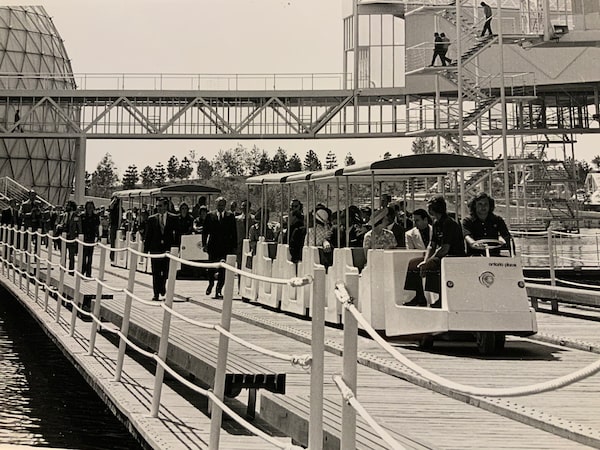
William Scoon, right, driving the Ontario Place 'train,' in the summer of 1973. Queen Elizabeth is seated just behind him, with Claude Bennett, Ontario Minister of Industry and Tourism.Ministry of Industry & Tourism
I drove the train out of the area, back to the garage and shared my story with the other summer staff, which they thought was hilarious. I wasn’t so sure, but I didn’t lose my job and continued to drive the train for the summer, telling anyone who cared about meeting the Queen!
A few weeks later the photo from the Ministry of Industry and Tourism arrived in the mail – that’s me on the right driving …. I wish I had that hair today!
Stephen Morgan, 66, Martins River, N.S.
She smiled at me once. The Queen. It was quite remarkable in an unremarkable way … for me that is, less than a second of her life, but a lasting memory in mine.
I was a young actor working a summer stock English music hall in a historical village. I only had a bicycle and rode the small country road the seven miles to and from work. There was a mile-long stretch where I had to ride along the Trans-Canada Highway before turning onto the dirt road to the theatre. On a summer morning in 1975 or ‘76, I turned onto the mile stretch, which had no shoulder, when a Mountie car passed me, followed by an open convertible where the Queen and Prince Philip sat in the back. I stopped just as the car passed me and both the Royals turned and looked at me as I was the only living thing in sight other than the cowherd behind me. We were an arms-length apart. They both smiled and I smiled back, raising my hand to wave as they carried on down the road.
That was it, I’ve never forgotten.
Paul Robinson, 84, Dartmouth, N.S.
The Northwest Territories was celebrating its 100th anniversary of becoming a part of Canada in July, 1970. In Yellowknife, I was part of the planning that had gone on for weeks. At Frame Lake in the city’s centre, an outdoor concert was planned. Part of my responsibility was setting up carpets to make sure that the royal feet never touched the ground.
The concert’s seating arrangements were a tip-off that the evening might not be as perfect as planned. The Royal Box for the Queen, Philip, Charles and Anne gave the Royals an unobstructed view of the central seating for the government employees and Yellowknife citizens fortunate enough to gain admittance. The complexion was white!
Farther away, the remaining tumbledown bleachers were a startling contrast. The occupants were all from the Dogrib Nation. Segregation was alive and well. When the concert concluded, the penthouse suite atop the 13th floor of the Territories’ tallest building was the Royals’ destination. The weather was sub-Arctic perfection.
From the penthouse suite, the Queen was absorbing each detail – the Bush Pilot’s Monument, the paved road to the “old town,” the rutted lane through the brush and the incredible setting for the scattered, tiny houses painted in an amazing array of bright colours. “What’s that?” I overheard the Queen ask. “Rainbow Valley,” a territorial government attendant replied. “I must see more,” the Queen persisted. A chauffeured vehicle was at the door.
I wasn’t there for what happened next, but everyone was talking about it: Through the bush, bouncing from pothole to pothole, the royal visitor was taken to her destination. The scene was unbelievable. In the emerging light of the new day, the centre of Rainbow Valley was congested.
Adults and children holding buckets were taking turns getting water from their only source, the village pump. The Queen was not amused, I heard. She asked her driver to stop. There were questions to be asked and answers to be forwarded to the appropriate government officials.
Within a few months of the Royals’ departure, I remember water, plumbing and sewage facilities had come to the homes of the Dogrib people inhabiting what had been Yellowknife’s forgotten neighbourhood. And no one ever knew how the Queen’s reported persistence and intervention may have helped bring change to Yellowknife’s Dogrib suburb!
Louise Boyer Hamel, 91, Magog, Que.
I am writing on behalf of my mother, Louise Boyer Hamel, who is sitting beside me.
In her hands she has a photo of Elizabeth and Philip when they visited Ottawa in 1951.
Mom was working for the federal government at the time. She was in the photo lab of the Ministry of Mines and Technical Services. She borrowed a big, heavy camera from the lab and used it to take the photo. As they were driving in the car she had to be ready for them when they went past the window. One photo was all she had time to take. She developed the photo herself in the government photo lab using the solution baths that she used every day for work.
It is a cherished memory for her. She keeps the photo safely under glass.
Thank you for sharing the photo with other Canadians.
:format(jpeg)/cloudfront-us-east-1.images.arcpublishing.com/tgam/4IXYF2NZ2JASDOA5G5IZ7POF6I.JPG)
:format(jpeg)/cloudfront-us-east-1.images.arcpublishing.com/tgam/LCYC4GKIHRFHBNO5W3UESUJUEY.jpg)
Anthony Goodhoofd, 71, Guelph, Ont.
I was eight years old and our family decided to drive down from Newmarket, Ont., and see if we could catch a glimpse of the Queen and Prince Philip as they were scheduled to attend a tea at the Grenadier Pond restaurant located in Toronto’s High Park. I ended up climbing into a maple tree that was alongside the procession route and perched myself way out on a branch that extended over the roadway. Once their open car approached, I got so excited that I almost fell out of the tree – the Prince did see me and waved. Pretty cool for an eight-year-old kid from Newmarket.
Bill Shead, 82, Selkirk, Man.
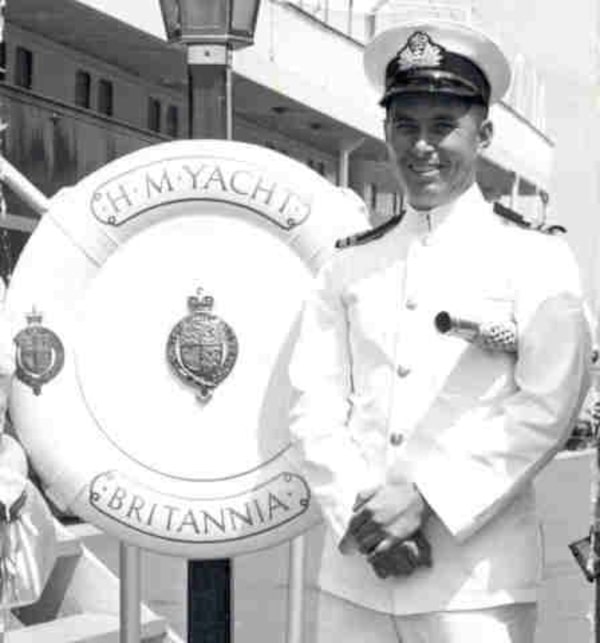
Bill Shead taking his turn as Officer of the Day in Montreal, 1967. The telescope under his arm is a sign that he was the Officer Of The Day.Handout
I am a Cree Member of the Peguis First Nation. Fifty-five years ago I was a lieutenant in the Royal Canadian Navy. During the 1967 Royal visit to Canada to commemorate Canada’s Centennial, I was assigned to serve in the Royal Yacht, HMY Britannia as a Canadian liaison officer and member of the ship’s crew.
I was presented to the Queen and the Duke of Edinburgh and had a short chat with them on the deck of Britannia while sailing through the Thousand Islands in the St. Lawrence River en route to Montreal from Kingston. One evening during the Queen Mother’s time aboard Britannia while sailing around the Maritime provinces, I was invited to dine with her in the royal dining room.
When the Canadians left Britannia to return to our proper ships, we presented the crew with a Condolence Cane from the Six Nations. A Condolence Cane was historically used by Six Nations to record the attendance of chiefs at council meetings. My friend Russ Moses, a Delaware from Six Nations of the Grand River, obtained it for us. At the time he was the deputy commissioner of the Indians of Canada Pavilion at Expo 67.
Wonderful memories from 55 years ago of royal “shipmates” – Her Majesty Queen Elizabeth II, His Royal Highness Prince Phillip, the Duke of Edinburgh, and Her Majesty Queen Elizabeth, the Queen Mother.
:format(jpeg)/cloudfront-us-east-1.images.arcpublishing.com/tgam/AWXNNSKABFGV3CHENHZD6OVRQY.jpg)
:format(jpeg)/cloudfront-us-east-1.images.arcpublishing.com/tgam/KPU62W6UNFDUBA6IFFL44GQKPA.jpg)
Peter Perry Everett, 77, Ottawa
About 20 years ago I had an assignment to deliver a series of seminars in Britain. Upon arrival at my accommodation, I asked at the main desk what was of interest in the neighbourhood. It was an early Sunday morning, and I was informed I was next door to Windsor Great Park. Off I went to explore, counting deer, admiring the architecture of the village and observing Windsor Castle in the distance.
I encountered a comfortably dressed gentleman with the title “warden” on his chest, and we had a warm, rich conversation about the flora and fauna in WGP. He said if I had a few minutes, Her Royal Highness and Prince Philip would be along as they would be attending the 11 a.m. Sunday service in the chapel in the village.
As well, he said, mind yourself as the Queen drives rather quickly.
A few minutes later we saw the Aston Martin driving down the narrow road, toward the village and Sunday service. As the car approached our position, two of the warden’s grandchildren scrambled from the verge in front of his house onto the narrow road. The royal vehicle came to a somewhat rapid stop! All was okay, the kids were unharmed.
The Prince was driving and I was about one foot from the stopped car on its left side. The passenger window came down immediately. HRH calmly asked, “Is everything in order?”
Both the warden and I said with a small bow of our heads, “Yes it is, Your Majesty.”
She then said, “Then ‘tis a fine day, gentlemen.”
I said, “Indeed it is, Your Majesty,” again slightly lowering my head in respect.
The window rolled up and the Prince continued to drive to the chapel.
At all times I kept my hands in plain view in front of my body. As the car left I became aware of about four SAS troops with their guns pointed at me.
A wonderful, private, informal encounter.
Marietta Maduro, Edmonton
In the summer of 1978, the Queen visited the University of Alberta to commemorate the Commonwealth Games. She toured parts of the campus, including Lister Hall, the student residence complex. Our daughter Melissa, then six years old, presented the Queen with a small bouquet of flowers she had picked from a friend’s yard. Her father took this photograph.
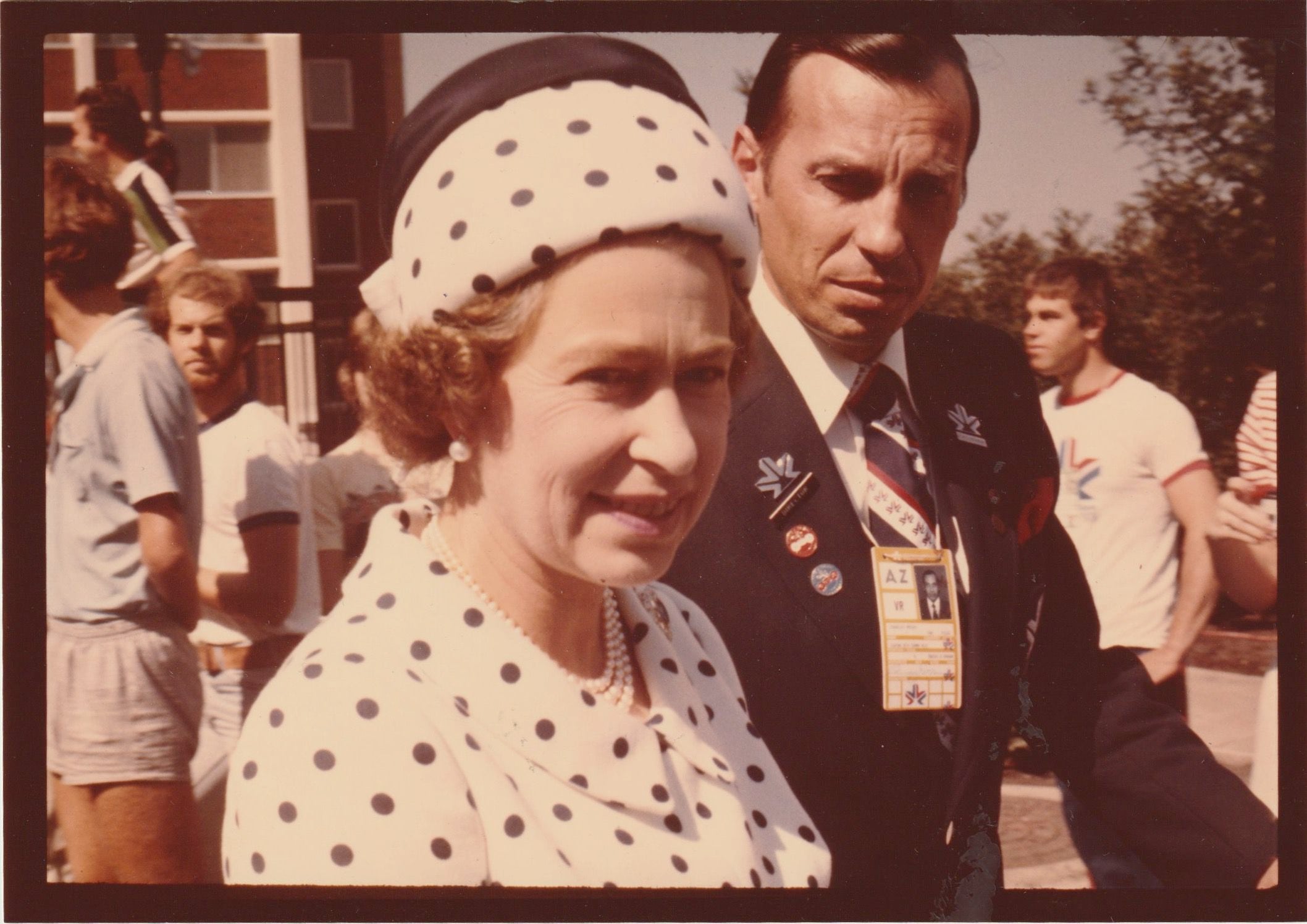
:format(jpeg)/cloudfront-us-east-1.images.arcpublishing.com/tgam/4OE4CIQYGFFNPHN7GBM2UY5ISY.jpeg)
Alice Forbes, 66, Milford, Ont.
I was one of 120 teens and young adults from about 30 various ethnic dance groups who performed for Queen Elizabeth and Prince Philip at what was the CNE Grandstand during their royal visit in June, 1973.
Mayor David Crombie escorted them to their seats in the stands and we were lined up in preparation for our dance on a raised wooden platform on the AstroTurf just inside the running track. At the end of it, we formed a horseshoe and the Queen and the Prince came down to the platform to meet us. What struck me most about Her Majesty was her aura, a radiance that could not be attributed to sunlight or makeup. I thought she absolutely glowed.
As she passed in front of my group, I gave a little curtsy and I heard her say “adorable.”
When the Prince approached, he asked what our nationality was – Polish, we responded. The next and last group in the horseshoe was also a Polish group. He looked at the eight of us. “Rivals?” he asked and one of us very enthusiastically replied that, yes, we were. We all laughed, including the Prince. As we left the grandstand field, a fellow dancer commented on what an honour it had been and I agreed, adding it was a memorable experience that might never be topped but would never be forgotten.
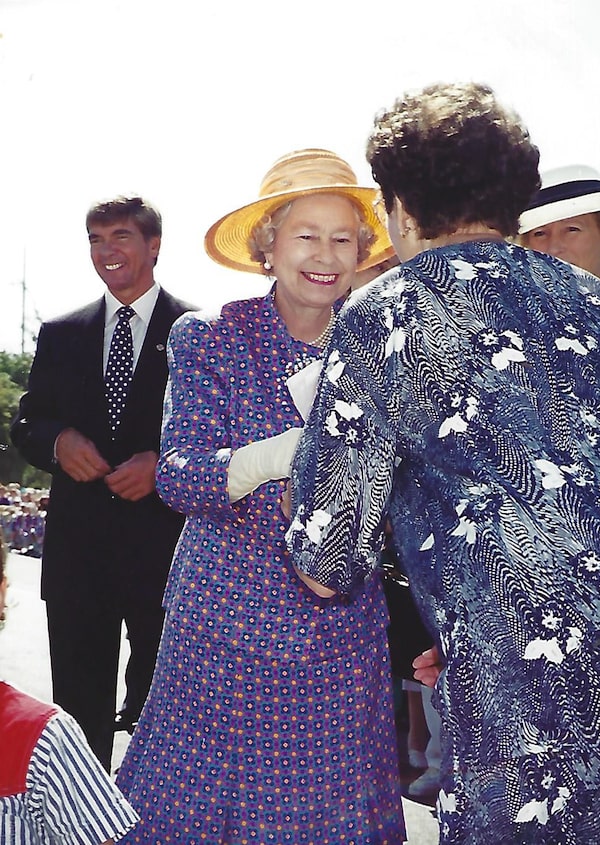
Eileen McLellan is shown handing Queen Elizabeth a rose named for Her Majesty, Aug. 1994.Bill McLellan/Handout
Eileen McLellan, 90, Chilliwack, B.C.
On Aug. 29, 1994, we were celebrating our 40th wedding anniversary when the Queen was visiting Victoria. I told my husband that I was going to give a rose to the Queen. He looked at me and said, “How are you going to do that?” I picked the Queen Elizabeth rose from our garden and we headed to Beacon Hill Park. We ran into the Member of Parliament David Anderson who said, “What a lovely rose.” I replied, “I plan to give it to the Queen.” He said, “Follow me.” But he said to my husband, “You can’t come!” My husband, Bill, replied, “But I’m the photographer!” So Mr. Anderson took us to the walkabout and we waited until Her Majesty, the Queen, came by. When she came toward me I said, “I would like to present to you a rose in your namesake, the Queen Elizabeth rose.” She smiled graciously and said thank you and accepted the rose. Bill took this picture and we have cherished it for all these years.
Michael Scott, 69, Welland, Ont.
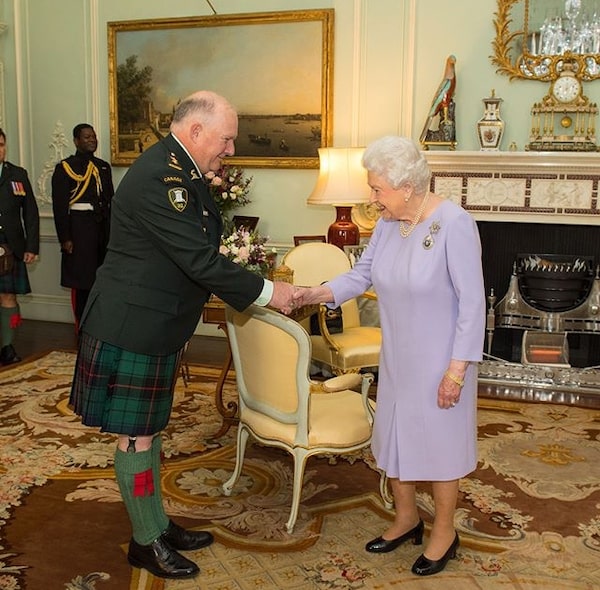
Michael Scott, honorary lieutenant colonel of the 48th Highlanders of Canada, meeting the Queen in Oct., 2017.Michael Scott/Handout
In October, 2017, I participated in a 45-minute audience with the Queen at Buckingham Palace. Her Majesty was the Colonel-in-Chief of our regiment, the 48th Highlanders of Canada, from 1947 until her passing. The purpose of our audience was to bring her greetings from the serving and retired members of the regiment and to update her on the current state of her regiment. Present at the audience were the Honorary Colonel Elms, the then-commanding officer Lieutenant-Colonel Pedwell and myself, the Honorary Lieutenant-Colonel. The Queen put us at ease very quickly and asked very relevant questions about the regiment and the Canadian Army. After discussing the regiment for several minutes, the conversation transitioned to more personal subjects as the Queen asked each of us what was going on in our lives outside the military and spoke about her summer in Balmoral. She also displayed her great sense of humour and had all of us laughing more than once.
Jerry Gray, 88, Thornhill, Ont.
I’m an original member of the Travellers, Canada’s first folk song group, which started in 1953. In 1964, the federal government invited the Queen and Prince Philip to open the Charlottetown Theatre for a command performance, which would commemorate the Charlottetown Conference from 1864 to kick off the 1967 Confederation celebrations. The concert featured the Travellers, who closed the first half and sang their Canadian version of This Land Is Your Land, written in 1954.
There are no photographs of the event as they were banned, but at an interview ceremony after the show, the Queen and Prince Philip were asked what they liked best about the concert and they both said the Travellers’ singing. They invited the group to Britain, and one week later we sang at the Palladium in London. Then followed two separate visits to Britain appearing on many TV shows and in concert. At the time of the command performance, the Travellers were the best known folk persona in Canada. We had recorded five albums already on Columbia, but the interest in the country of being praised and invited to appear at the London Palladium gave us more stature. The publicity gained by being selected by the Royals certainly gave us the credibility across the country and around the world leading to a career for me of 68 years of concerts and lectures.
Jana Mills, 67, Wolfe Island, Ont.
My dad was mayor of Kingston, hosting the Queen and Prince Philip in June, 1959. I was almost five years old. My mother recalls that I broke away from the rest of my family to meet the Queen. Queen Elizabeth looked down at me and asked, “Is this your child?” and when my mother responded, “Yes, she is, Your Majesty,” the Queen graciously answered, “A beautiful child.” Otherwise, my mother assures me, I behaved.
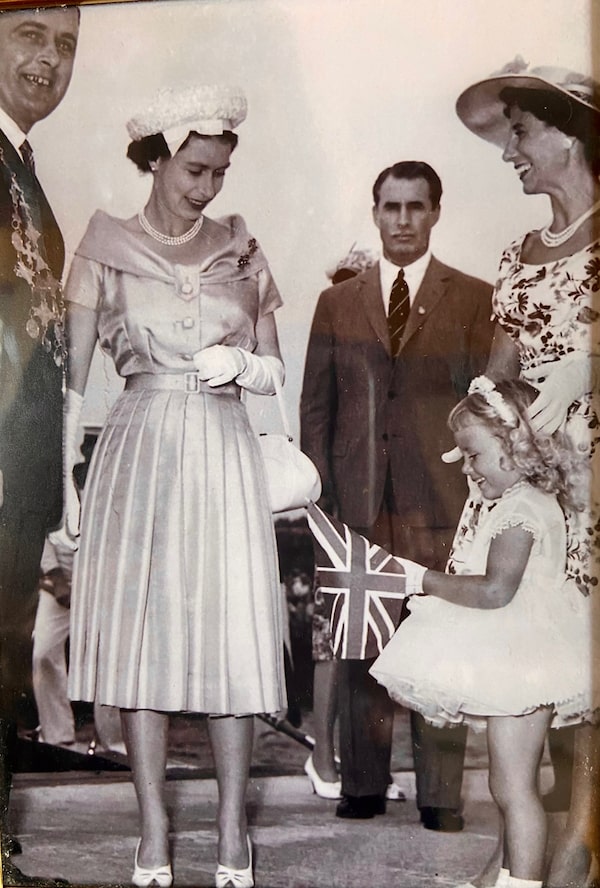
Jana Mills meeting the Queen in Kingston, June 1959.Jana Mills/Handout
Interviews have been edited for clarity and style.
Our Morning Update and Evening Update newsletters are written by Globe editors, giving you a concise summary of the day’s most important headlines. Sign up today.
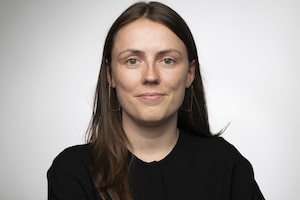 Caora McKenna
Caora McKenna